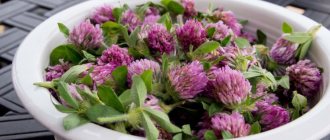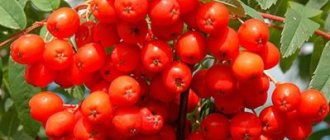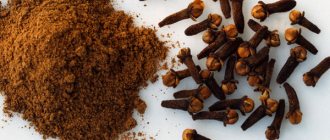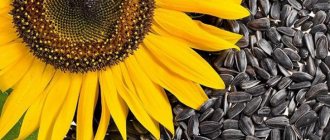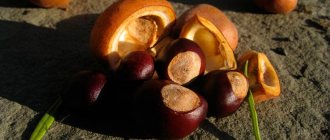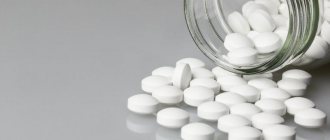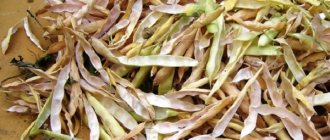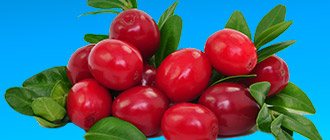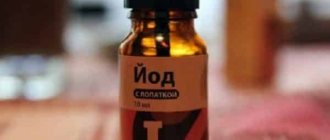Medicinal herbs are often used to normalize blood pressure. Since they have a gentle effect on the human body and, with moderate consumption, do not cause the development of side effects. One of these plants is oregano. But before using it for medicinal purposes, you need to know whether oregano lowers or increases blood pressure. You should also take into account existing contraindications for use, so as not to inadvertently cause harm to health.
Oregano is not only a seasoning, but also a valuable medicinal herb
The effect of oregano on blood pressure
It is impossible to say unequivocally whether oregano raises or lowers blood pressure, since it depends on the method of its use. Because oregano can be used to treat hypertension and hypotension.
To lower blood pressure, oregano should be used in the form of a decoction, tea, infusion, tincture, and also as part of herbal preparations. In this case, the plant has a beneficial effect on the body due to its diuretic properties, normalization of the digestive organs, enhancement of metabolic processes, and removal of toxins.
For low blood pressure, oregano should be used as an essential oil. It is recommended to apply a few drops of it to the wrists, neck, and earlobes. Essential oil can also be used in an aroma lamp, where when heated, increased evaporation of the product occurs. When you inhale air saturated with oregano oils, the discomfort caused by low blood pressure goes away. As a result, blood flows to the head, health improves, and pain in the back of the head and crown of the head decreases.
Oregano can raise and lower blood pressure
Effect of oregano under pressure
Oregano affects the body of each person individually. The resulting effect also depends on the method of application: essential oils of this flower in inhalations are not suitable for use by people with low blood pressure, as they will provoke a jump in blood pressure. But making tea, tinctures and decoctions, on the contrary, will reduce blood pressure.
Carvacrol contained in the herb reduces the heart rate and reduces the amount of triglycerides (plaques deposited on the walls of blood vessels). Reducing the load on the heart will help normalize blood pressure and relieve an acute crisis. In addition, consuming oregano normalizes cholesterol levels and optimizes blood circulation.
Acts as a sedative and is recommended for nervous system disorders, stress, irritability and insomnia. Doctors advise adding motherwort to dishes instead of salt, since sodium raises blood pressure. It is also permissible to use a medicinal plant for hypotensive patients, since oregano optimizes the functioning of all body systems and allows one to achieve acceptable blood pressure levels.
Chemical composition and beneficial properties
The healing properties of oregano are due to its rich chemical composition. This perennial herb contains tannins, a complex of vitamins, essential oils, flavonoids, mineral components, dietary fiber, fatty acids, and antioxidants. Thanks to this, oregano reduces or increases blood pressure, depending on how it is used.
The uniqueness of the plant is that oregano contains an organic compound in its leaves and flowers - carvacrol, which reduces the heart rate. Oregano can also reduce the amount of triglycerides in the body, which settle on the walls of blood vessels and reduce their permeability. Oregano also helps control cholesterol levels in the human body. And this allows you to strengthen the heart muscle and improve blood circulation.
Other beneficial properties of oregano:
- normalizes sleep;
- restores psycho-emotional state;
- relieves spasms;
- activates blood flow;
- strengthens the walls of blood vessels;
- helps cleanse the body of toxins;
- reduces the load on the heart;
- prevents the proliferation of staphylococci and E. coli;
- strengthens the immune system;
- slows down the aging process;
- prevents and inhibits the growth of cancer cells.
Important! The use of oregano in severe forms of hypertension is unacceptable, as this can cause serious complications.
Useful properties of the plant
Like any representative of the plant world, she has some abilities that herbalists actively use. Traditional medicine has also recognized the benefits of its use. It can be found in many medicinal preparations. All this is determined by the list of certain components of its composition. Among them are:
- essential oils;
- flavonoids;
- tannins;
- phenol;
- ascorbic and rosmarinic acids.
It is often confused with mint, but they are two completely different plants. The benefits of oregano for hypertension are also based on its effects. It consists in:
- relieving attacks of high blood pressure;
- eliminating nervous tension;
- increasing the elasticity of blood vessels;
- improving the blood formula;
- relieving spasms.
All of the above beneficial properties are actively taken into account when preparing a new medicinal product or collection. In addition, it actively acts to increase immunity, which is also important, since it is undesirable for a person with high blood pressure to get sick, because this is an additional burden on the body.
Traditional recipes with oregano for hypertension
To lower blood pressure, oregano should be taken orally. In this case, you can use various folk remedies. It is recommended to prepare them based on the leaves and flowers of the plant, since they contain the most beneficial components for human health.
Decoction with oregano for high blood pressure
To get a drink that helps lower blood pressure, you need to pour 2 tbsp. l. dried oregano 300 ml water. Boil the mixture for 20 minutes over low heat, remove. After cooling, strain the drink.
You can prepare the decoction in another way. In this case, you need to pour 50 g of oregano collection into 500 ml of water and mix. Simmer the resulting mixture in a water bath for 40 minutes. After cooling, strain it.
Important! Oregano decoction should be stored in the refrigerator for no longer than three days, as it subsequently loses its healing properties.
Take the medicine four times a day, 1 tbsp. l. before meals, which will lower blood pressure. The duration of the course of treatment is three weeks. At the end of it, take a break for a month.
The decoction should be warmed to room temperature before use.
Oregano tea for high blood pressure
To obtain a healing remedy that helps lower blood pressure, you need to brew the raw materials correctly. Otherwise, the drink will be aromatic, but useless for treating hypertension.
Cooking method:
- Pour 1 tbsp into an enamel container. l. collecting oregano.
- Pour 250 ml of hot water into it.
- Leave the product for 25-30 minutes.
- After time, strain.
It is recommended to drink tea warm to lower blood pressure. It should be taken 100 ml four times a day. The course of treatment is two weeks, after which you should take a break for the same period.
To improve the taste of tea, you can add honey after the drink has cooled to 30 °C.
Water infusion
Oregano can also be used in the form of a water infusion for hypertension. To prepare it, you need 2 tbsp. l. collect oregano, pour 150 ml of hot water. Leave the product for 30 minutes, covering the container with a lid. After the time has passed, strain the drink.
Take the medicine four times a day, 50 ml. It is recommended to drink water infusion 15 minutes before meals. Therapy is carried out for two weeks, and then take a break for 20 days.
The shelf life of the water infusion is 72 hours at a temperature of +4-6 °C
Tincture
To lower blood pressure, you can also use an alcohol tincture based on oregano. To prepare it, you need to pour the oregano mixture into a glass container and fill it with 70% alcohol in a ratio of 1:4.
Infuse the product for four weeks in the dark at room temperature. The container needs to be shaken daily. After the waiting period has expired, strain the product. Take 5-7 drops three times a day for a month to lower blood pressure. After this, take a break for eight weeks.
If desired, the product can be dripped into regular tea.
Important! Oregano tincture for lowering blood pressure, unlike water-based products, can retain healing properties for up to a year.
Herbal infusions
Oregano has a beneficial effect on high blood pressure and as part of herbal preparations. This allows you to increase the effectiveness of therapy and prevent the development of complications.
Effective recipes for lowering blood pressure:
- Combine a collection of oregano, St. John's wort, and valerian in equal quantities. Pour 2 tbsp into an enamel container. l. the resulting mixture. Pour 250 ml of hot water, leave for 15 minutes. After the time has passed, pour in 1 tbsp. l. Bittner balm. Stir and leave again for 15 minutes. Take the medicine to lower your blood pressure at night, half an hour before bed. And to improve the taste you can add honey.
- Mix valerian roots, sweet clover, thyme, oregano, motherwort in a ratio of 2:1:4:4:4. Pour 20 g of the resulting mixture into 250 ml of warm water, cover with a lid and leave for 12 hours. After time, strain. Take four times a day before meals to lower blood pressure. The course of treatment is two weeks.
- Mix thyme, bearberry, valerian roots, calendula flowers, oregano, dried herbs, motherwort, hawthorn in a ratio of 1:2:3:3:3:3:3:4. Pour 500 ml of hot water into the resulting pressure-reducing mixture, stir and cover with a lid. Infuse the herbal mixture for four hours. Take it after straining to lower blood pressure in the morning and evening, 100 ml half an hour before meals. The course of therapy is carried out for 14 days. If necessary, repeat treatment after a break of three weeks.
Herbal teas help not only lower blood pressure, but also increase stress resistance and fight insomnia
Important! Oregano-based folk remedies should be used to treat hypertension only after consultation with your doctor.
Traditional treatment recipes
There are different recipes for oregano for hypertension. Many of them can be prepared independently at home. You can also prepare raw materials for them individually or purchase them at a herbal pharmacy.
Decoction recipe
The decoction is prepared from the following components:
- 200 ml boiling water;
- 2 tablespoons of herb.
Place everything in an enamel bowl or pan. Place on low heat for a quarter of an hour to simmer. Once cooked, remove and cool. When the product is cool, it should be strained. Drink ¼ glass three times a day.
Infusion recipe
The healing properties of oregano herb for hypertension remain in the infusion. It’s much easier to prepare and it won’t take you a lot of time and effort. Take a half liter jar and fill it ¾ full with the dried main ingredient. Next, fill with boiling water to the top. Cover with a nylon lid and wrap with a towel. An hour after this, the product is ready for use. A single dose is a quarter glass. You should repeat this three times a day.
Contraindications for use
Not all people can use the ability of oregano to lower blood pressure. Since its use has certain contraindications. And if they are ignored, therapy can have a negative effect on human health.
Oregano should not be used to reduce the likelihood of developing hypertension if:
- individual intolerance;
- pregnancy;
- increased stomach acidity;
- ulcers;
- renal, hepatic colic;
- heart diseases.
The use of oregano for the treatment of children is prohibited, as the plant can cause hormonal imbalance, which leads to late puberty. To lower blood pressure, oregano therapy should not be carried out even during sudden changes in blood pressure.
Important! Uncontrolled use of oregano-based products leads to suppression of reproductive function and the development of impotence.
Are there any contraindications?
Despite all the usefulness and breadth of use of the motherboard, there are a number of points in which it is better to abandon this method of treatment. The use of oregano in any form is prohibited in the following cases:
- pregnancy;
- peptic ulcer;
- poor clotting;
- allergy;
- severe heart and cardiovascular diseases;
- renal and liver failure;
- increased stomach acidity;
- severe form of hypertension.
Treatment with oregano must be agreed with a doctor, who will prescribe the necessary dosage and course of treatment. Otherwise, the plant may cause side effects.


